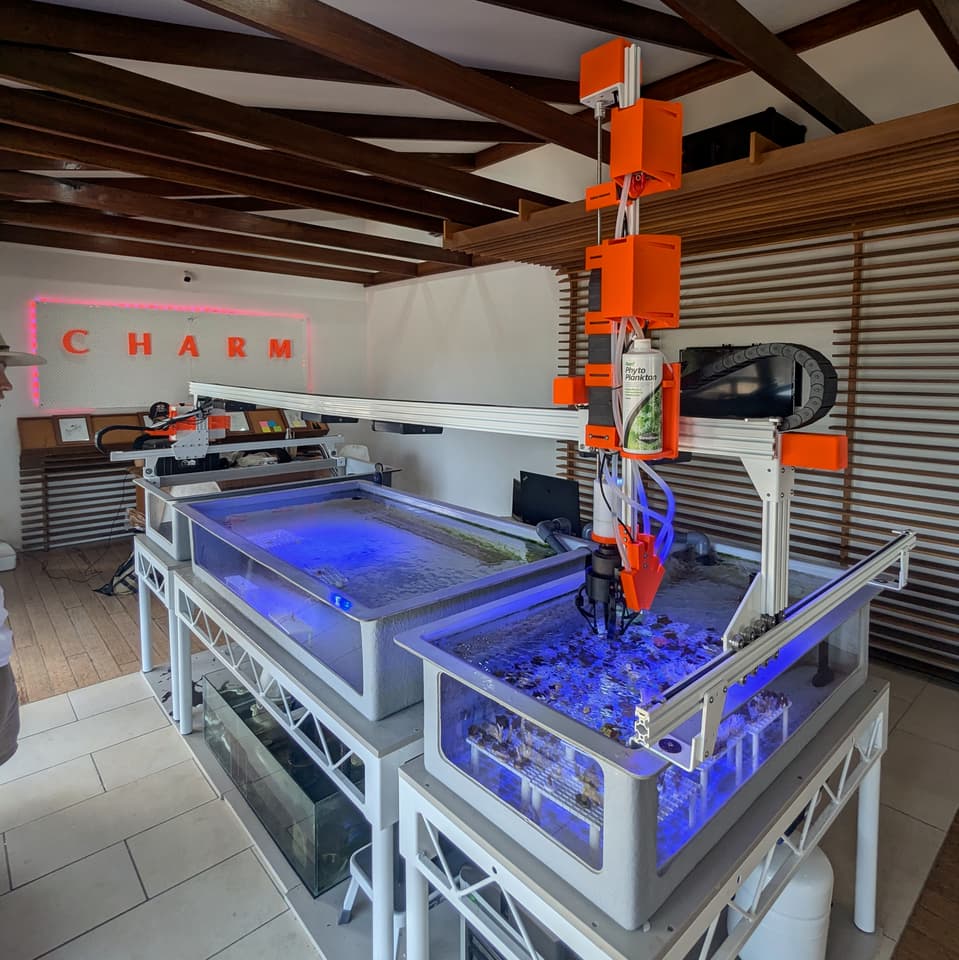Various groups are now growing baby corals for transplantation into the world’s disappearing reefs, but they need a hand. A new robotic hand has been created to help, by carefully and efficiently transferring the li’l corals between tanks as they grow up.
The device was designed by Australian government research agency CSIRO (Commonwealth Scientific and Industrial Research Organisation) in partnership with the Beyond Coral Foundation. It was made for use with the foundation’s Coral Husbandry Automated Raceway Machine (CHARM), which is a coral-farming robot.
Currently at Beyond Coral’s facility on Australia’s Magnetic Island, small sections of living coral are harvested from larger pieces, then grown in a series of indoor tanks until they’re big and hardy enough to survive on an actual ocean reef.
Raising these baby corals involves daily tasks such as feeding them, cleaning them, removing algae from their tanks, and transferring them between tanks tailored to optimum growing conditions as they get larger. All of these jobs are presently performed by people.
According to Beyond Coral, however, there simply aren’t enough skilled human workers to cultivate the millions of corals that will be required to repopulate all of the planet’s decimated reefs. CHARM is intended to meet that need, by tirelessly working around the clock at coral nurseries around the world.

CSIRO
The robot uses different attachments to perform different tasks, with the CSIRO hand being utilized to gently lift corals from one tank and transfer them to the next tank down the line.
Better described as a gripper, the soft-bodied device was created utilizing special AI generative design algorithms, which identified the best structures for safely and effectively handling fragile corals.
It also has to stand up to constant use in salt water, which will quickly corrode metal parts. With that concern in mind, the 3D-printed gripper is made up almost entirely of hard polymer and soft rubber parts – its only metal components are a few screws and bolts.

CSIRO
Once developed further, the technology may also be utilized to place the grown corals on reefs.
“This gripper replicates the dexterity of a human hand, allowing it to handle delicate coral tissue without damaging them, while being strong enough to lift various sizes,” says CSIRO’s Dr. Josh Pinskier. “By automating this process, we can contribute to broader global efforts to scale coral farming and help restore the world’s reefs.”
Sources: CSIRO, Beyond Coral Foundation
Source of Article